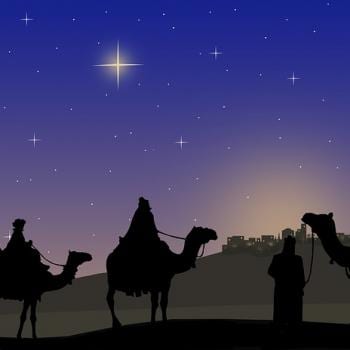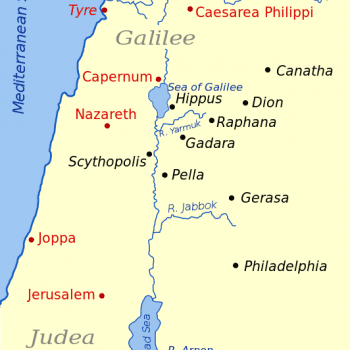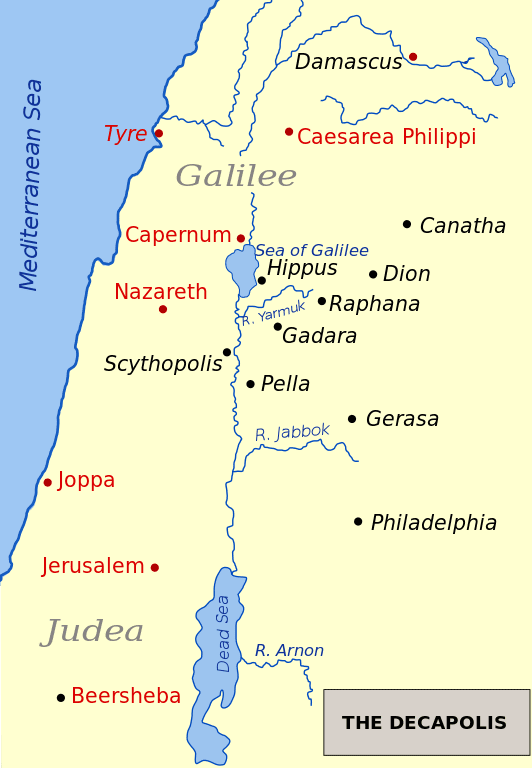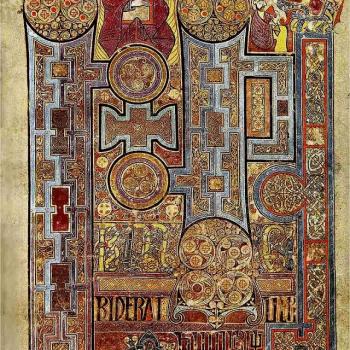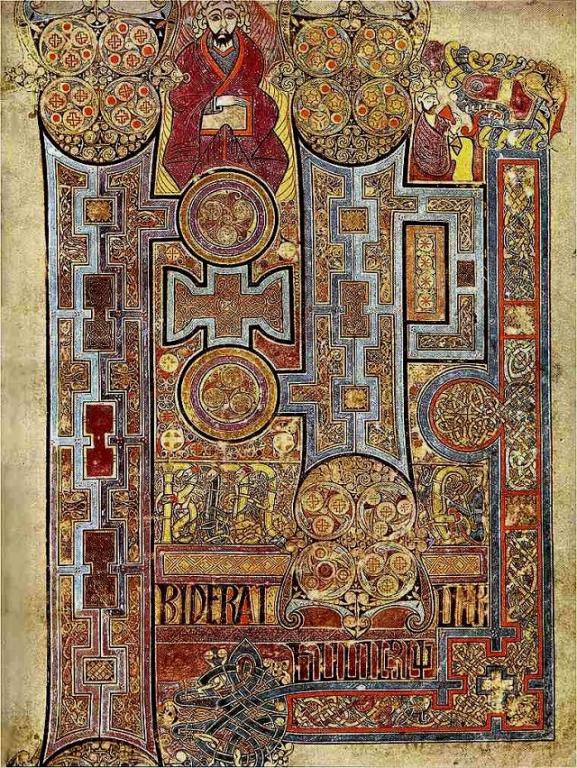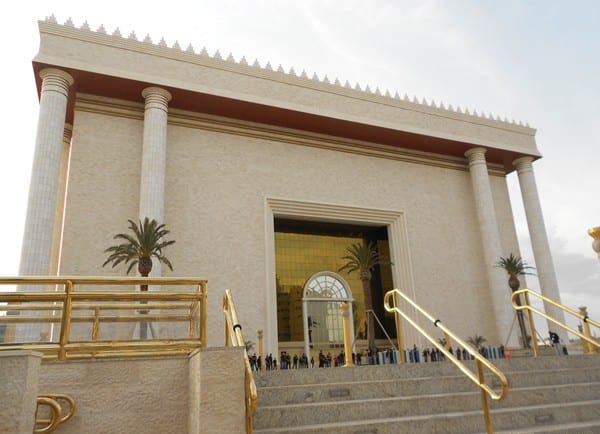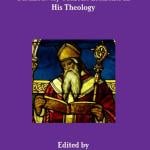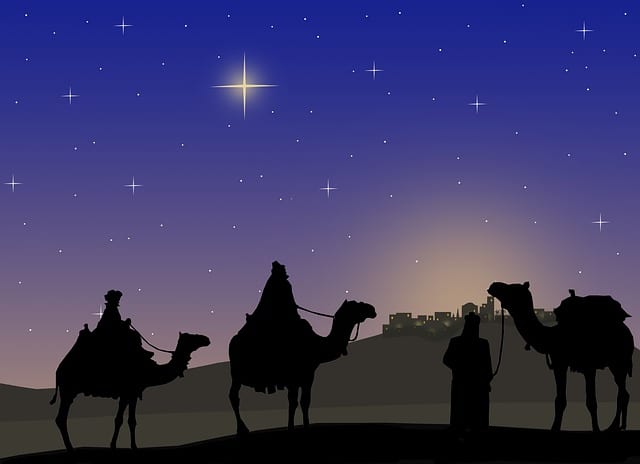
I have rarely enjoying studying and writing about anything as much as I have, delving into the star of Bethlehem. It all started by an almost random viewing of the very popular Star of Bethlehem video by Fred Larson in early December 2020. That got my curiosity going and I went from sub-topic to sub-topic: eventually clashing with atheists: including one caustic, obnoxious fellow who wrote an entire book about it. Along the way, over the past six weeks or so, I have learned so many fascinating and extraordinary things: most of which never crossed my mind, or concerning which I wasn’t familiar enough to have an informed opinion.
I have adopted the “conjunction” explanation: in particular, the theory that the “star” was a series of spectacular, bright conjunctions in 3-2 BC, involving Jupiter and other planets or stars, and eventually Jupiter alone: at the time the Magi travel from Jerusalem to Bethlehem. All of this presupposes the death of Herod the Great in 1 BC (a minority / controversial view, but one still held by a number of reputable scholars), rather than the accepted majority view (a 4 BC death). I provide reasons for why I hold this death date in my primary paper on the star.
Without further ado, I’d like to now summarize some of the amazing and surprising things I have discovered in this most enjoyable research project / “journey”:
1) Wise Men / Magi The wise men (lit. Magos; plural of Magi; Mt 2:1, 7) were originally a Median (northwest Persian) tribe (Herodotus [Hist.] i.101), who performed priestly functions (Xen. Cyrop. viii); see Encyclopaedia Britannica: “Magus: Persian priesthood”. Church fathers St. Clement of Alexandria (Stromata I.15), St. John Chrysostom, and St. Cyril of Alexandria (In Is., xlix, 12) held that they were Persian, though many commentators believe they were from Babylon. The prophet Jeremiah referred to the head of the caste, Nergal Sharezar, as Rab-Mag, or “Chief Magus” (Jer 39:3, 13).
2) Zoroastrians? They may have been Zoroastrians (rather than “magicians”; this religion forbade sorcery) and Zoroaster (Zarathustra) possibly belonged to their tribe.
3) Astronomers They were astronomers and astrologers. Astrology of this sort regarded the celestial events as a “reflex” or sometimes an “anticipation” of events on Earth, but not in the modern “horoscope” sense of supposed causality.
4) Retrograde Motion of Planets Ancient Babylonian astronomy (certainly a major influence on the Magi, wherever they were from), was so sophisticated that — since very ancient times — it understood the phenomena of retrograde motion and stationary points.
5) Jewish Messianic Prophecies It is likely that the Magi were familiar with these (including speculations that a star would precede the advent of the Messiah; see, e.g., Num 24:17). There was a sizeable Jewish population in Babylon (the descendants of those who did not return with Nehemiah to Israel), and probably one in Persia as well, since Israelites settled in Media in c. 730-728 BC (2 Kings 17:6). In nearby Yemen, there was a line of Jewish kings from about 120 BC to the sixth century AD.
6) Three? The Bible never specifies three wise men. It’s a supposition based on the three gifts that they gave (gold, frankincense, and myrrh: Mt 2:11).
7) Kings? None of the Church fathers regarded the Magi as kings.
8) Route Taken by the Magi This would have certainly been the well-established route along the Fertile Crescent, which Abraham traveled many centuries earlier, along very famous roads like the Royal Road, the King’s Highway, and the Silk Road.
9) Jesus Was a Toddler When Visited by the Magi The word for child in Matthew 2:8-9 is paidion (Strong’s word #3813): defined as “a young child . . . properly, a child under training; the diminutive form of 3816 /país (“child”). . . . implies a younger child (perhaps seven years old or younger). Some scholars apply 3816 (país) to a son or daughter up to 20 years old.” “Babe” on the other hand (Lk 2:12, 16 in RSV and KJV) is Strong’s word #1025, brephos: which means: “an unborn or a newborn child” and is used of children in the womb in Luke 1:41, 44. In Luke 2, it’s the day of Jesus’ birth (Lk 2:7, 11). So the use of “babe” (2:12, 16) and “child” (2:17) in English (RSV) obviously includes the meaning here of “newborn.” I believe Jesus was a year old when they visited (based on various reasons that I present). Commentators generally believe He was two years old or younger, but not a newborn. They visit a “house” (Mt 2:11), not a baby in a “manger” (Lk 2:7, 12, 16): no angels (Lk 2:9-10, 13-15) or shepherds (Lk 2:8, 15-18) or animals are in sight.
10) “Star in the East” (Mt 2:2) this refers to a star’s rising, which is always in the east. I’ve found sixteen Bible translations that refer to “rising” or “rose” (including NRSV, NIV, NEB, and REB). Thus, there is no conflict with the notion that it guided them west. Jerusalem was directly due west of both Babylon and northwest Persia.
11) Following a Star? The Bible never states that they followed the star of Bethlehem on their entire 1000-1200 mile journey; only that the Magi had “seen his star” in their land and (for various reasons) thought it indicated that they should travel to Israel to visit a very significant newborn king (Mt 2:1-2). The contrary notion comes from (so it seems) We Three Kings of Orient Are rather than Holy Scripture.
12) Jupiter-Regulus Conjunctions A triple conjunction between Jupiter (known in ancient astronomy as “the king planet”), and the quadruple star system star Regulus (“the king star”), the brightest object in the constellation Leo, occurred starting in September, 3 BC.
13) Jupiter-Venus Conjunction Jupiter was in a very close conjunction with Venus on 17 June, 2 BC: so close they may have even overlapped. It would have looked to the naked eye like one very bright star: about as close as any conjunction can be. This spectacular conjunction would have (plausibly) enticed the Magi to journey to Jerusalem, partially because it would have appeared in the west, precisely in that direction. Other relevant factors are the symbolism of the constellations, and celestial bodies (as noted in #12).
14) Duration of the Journey of the Magi The wise men would have needed at least two months, but probably three or four, to journey to Jerusalem from Persia. This particular proposed scenario would give them a “window” period of six months, to see the extraordinary conjunction of 17 June, 2 BC in their homeland and also the “star of Bethlehem” when they arrived in Israel in December, 2 BC (see #16 below).
15) Jupiter-Mars Conjunction This occurred on 26-27 August, 2 BC, with Venus and Mercury also close by.
16) Star (Jupiter) “Went Before Them” This is the language of Matthew 2:9 (RSV). It refers only to the six-mile (southern) journey between Jerusalem and Bethlehem (see #11 above). How are we to interpret this? The Bible habitually uses phenomenological language. We talk the same way today, and refer to the sun “rising” and “setting” as if it is moving, or “following the sun west” on a western trip from the eastern parts of America. But we know that the appearance of its movement to our eye is due to the earth’s rotation. If the Magi set out early in the morning from Jerusalem to Bethlehem in December, 2 BC, we know that Jupiter would have still been visible to the south as they took the usual route: Derech Beit Lechem. It follows the terrain and gradually turns to the west. At the rate they were traveling (presumably by camel), Jupiter would have been “before” them all the way to Bethlehem, since it would have moved slowly to the west, in its usual motion in relation to all the other stars (“motion” based on the rotation of the earth), but also in its period of retrograde motion (see #4).
17) “It Came to Rest Over the Place Where the Child Was” (also Matthew 2:9). The Greek “adverb of place” in Matthew 2:9 is hou (Strong’s word #3757). In RSV hou is translated by “the place where” (in KJV, simply “where”). It applies to a wide range of meanings beyond something as specific as a house. In other passages in RSV it refers to a mountain (Mt 28:16), Nazareth (Lk 4:16), a village (Lk 24:28), the land of Midian (Acts 7:29), and the vast wilderness that Moses and the Hebrews traveled through (Heb 3:9). Thus it can easily, plausibly refer to “Bethlehem” in Matthew 2:9. The text does not specifically say that “it stood over a house.” I have found 19 English Bible translations of Matthew 2:9 that have “the place where” (RSV, Weymouth, Moffatt, Confraternity, Knox, NEB, REB, NRSV, Lamsa, Amplified, Phillips, TEV, NIV, Jerusalem, Williams, Beck, NAB, Kleist & Lilly, and Goodspeed).
18) Jupiter’s Stationary Point On December 2, 2 B.C., Jupiter began its retrograde motion, until 25 December. It would have appeared to travel horizontally above Bethlehem (viewed from Jerusalem), while Mercury and Venus (also visible), traveled to the horizon every might. Jupiter was (relatively) “stationary” for about six days of that time (its “stationary point”). To say, in common parlance (see #20), that the star “came to rest” is not to say that it had absolutely no movement at all to the naked eye. Ancient astronomers used their fingers to measure planetary movements, and when they could barely detect any movement, they concluded that the planet had stopped (stationary point).
19) Star Shining on a House (or Manger)? The biblical text doesn’t specify a “small area” being illuminated, or even a larger one. All it meant — given the use of the word hou in the New Testament — is: “the star stood over Bethlehem”. Many readers (filled with the endless – sometimes inaccurate — images of Christmas from childhood) confuse this with another Christmas passage:
Luke 2:8-9 And in that region there were shepherds out in the field, keeping watch over their flock by night. [9] And an angel of the Lord appeared to them, and the glory of the Lord shone around them, and they were filled with fear.
Note that even in this passage, it is the supernatural (shekinah) light from an angel (rather than a star) that “shone around them” and they were not yet visiting Jesus. Thus, Luke 2:15 states: “Let us go over to Bethlehem and see this thing that has happened . . .”
20) Magi, Astronomy, & Phenomenological Language Since we know that the Magi understood retrograde motion of planets (already known by ancient astronomers for many hundreds of years), this may very well lie behind Matthew’s terminology (received from oral tradition) of “came to rest over” Bethlehem. They had to explain a very technical astronomical thing in “layman’s language” and this fits the bill perfectly, as does “went before them.” If true, this would support my natural interpretation all the more, because it’s not just (as a critic might say) “projecting” our modern scientific understanding onto the Bible, but an understanding that already existed and was known by the wise men. In other words, the wise men were wise: very smart guys!
All of this confirms what the Bible (God’s inspired and infallible revelation) has taught all these years. Science has not “refuted” the Bible. It’s quite the opposite: it confirms and verifies it again and again.
Related Reading
I Was Blessed to Visit Bethlehem in 2014. What Joy! [National Catholic Register, 12-31-17; originally 12-26-14]
Reply to Atheist Jonathan MS Pearce: Herod’s Death & Alleged “Contradictions” (with Jimmy Akin) [7-25-17]
December 25th Birth of Jesus?: Interesting Considerations [12-11-17]
Was Christ Actually Born Dec. 25? [National Catholic Register, 12-18-18]
The Bethlehem Nativity, Babe Ruth, and History [National Catholic Register, 1-1-19]
Vs. Atheist David Madison #36: Matthew & Christmas [12-10-19]
Answering the Bethlehem Skeptics [Catholic Answers Magazine, 12-10-19]
Star of Bethlehem, Astronomy, Wise Men, & Josephus (Amazing Astronomically Verified Data in Relation to the Journey of the Wise Men & Jesus’ Birth & Infancy) [12-14-20]
Who Were the “Wise Men,” or Magi? [National Catholic Register, 12-16-20]
Conjunctions, the Star of Bethlehem and Astronomy [National Catholic Register, 12-21-20]
Star of Bethlehem: Refuting Silly Atheist Objections [12-26-20]
Route Taken by the Magi: Educated Guess [12-28-20]
Star of Bethlehem: More Silly Atheist “Objections” [12-29-20]
Astronomy, Exegesis and the Star of Bethlehem [National Catholic Register, 12-31-20]
Star of Bethlehem: Natural or Supernatural? [1-13-21]
Bible Commentaries & Matthew 2:9 (Star of Bethlehem) [1-13-21]
Star of Bethlehem: Reply to Obnoxious Atheist Aaron Adair (Plus Further Related Exchanges with Aaron and a Few Others in an Atheist Combox) [1-14-21]
Star of Bethlehem: 2nd Reply to Arrogant Aaron Adair [1-18-21]
Star Researcher Aaron Adair: “Liar, Liar, Pants on Fire!” [1-19-21]
***
Photo credit: iessephoto (12-26-20) [Pixabay / Pixabay License]
***


